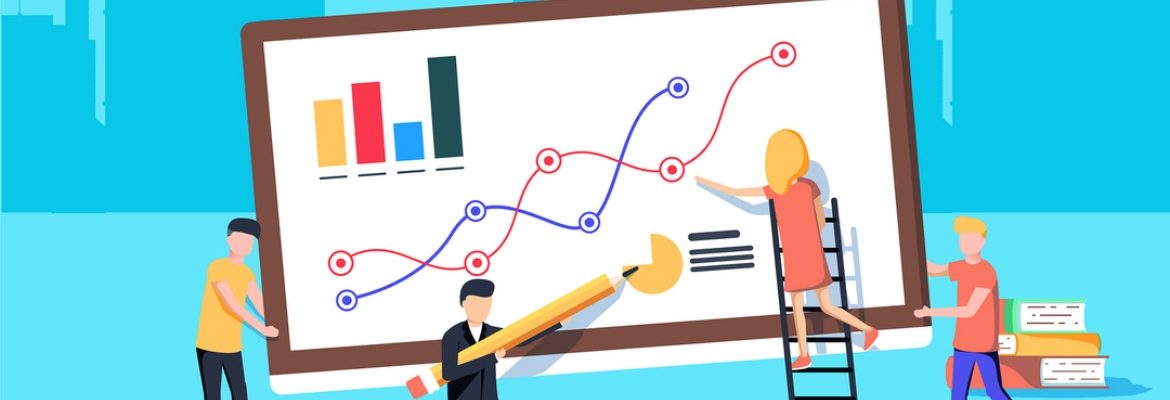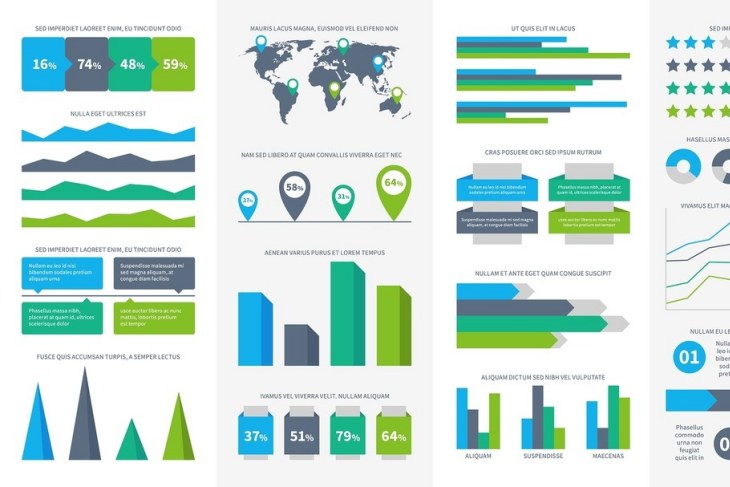You’ve Been Asked to Choose a Financial Reporting Tool: Now What?

“Information as an asset is still in the ‘early adoption’ phase, which makes it a competitive differentiator for leading organizations as they focus on digital transformation. In turn, data and analytics become strategic priorities.”
That’s a quote from a recent Gartner report underscoring the critical importance of data for today’s companies. Adding further emphasis, the report goes on to predict that by 2022, 90 percent of corporate strategies will classify data as a critical asset and list analytics among the core competencies.
At this point, most companies have read the writing on the wall and concluded they need to upgrade how they leverage data. In many cases, that means selecting an enterprise reporting tool that offers capabilities above and beyond what’s available from the ERP.
If you’ve been tasked with selecting that tool, you have a mission-critical responsibility. Moving forward, your company will depend on its reporting tool to be the portal into data, the gateway through which stakeholders across the enterprise gain access to insights, ideas, and strategic innovations. It’s possible as long as you pick the right tool.
As you have probably discovered, there’s no lack of options on the market, with each promising to deliver cutting-edge features and best-in-class capabilities. But how do you separate the truth from the sales pitch and identify the tool best suited for your specific company’s needs? It’s not easy, but it’s not impossible either. We suggest you look for tools that don’t just make reporting easier, but also turn it into a true asset. Whatever you choose, make sure it has these features and qualities:
In-Depth Reporting Capabilities
Plenty of tools can integrate and analyze information for you, but that’s not really what you’re looking for in a reporting tool. Instead, you need an insight generator: something that can elevate your data to the point where it guides all aspects of decision making and improves outcomes consistently.
Evaluating how extensively a reporting tool can engage with information is hard to do without weeks of use, but tools with a few key features tend to be more reliable sources of insights. Look for drill-down capabilities that allow you to explore the data behind the performance metrics all the way down to the journal level.
Great tools will also update your reports automatically, saving you hours of regular work preparing reports and ensuring decisions are always based on up-to-date information. Realistically, tools that lack these features make data more accessible, but not necessarily more valuable.
Sophisticated Data Visualizations
Reporting tools should elevate data by making them more insightful and more digestible. By digestible, we mean that it’s easy to identify the key takeaways from the report, as well as the more subtle insights contained within.
Presenting decision-makers with a grid of facts and figures and expecting them to pick up on everything isn’t realistic, which is why great reports typically incorporate data visualizations like charts, graphs, and even more sophisticated ways of presenting the information. Tools that make visualizations widely available and customizable produce reports that are more engaging and more instructive too.
Expansive Data Consolidation
Currently, building a report means going into the ERP, extracting information, plugging it into Excel, and meticulously trying to integrate it with data from other sources. It’s an inefficient and error-prone process, and the right reporting tools make it unnecessary.
Choose one that integrates information from multiple sources, ERP and otherwise, rather than one that was built to suit a single information ecosystem like Oracle or SAP. In a perfect world, you would rely on one tool to report on all of your data.
Seamless Scalability
Your company already deals with an ocean of data, and the volume will only grow as you begin collecting more information from more sources. If your reporting tool cannot scale to accommodate these larger volumes, something intended to help you explore data will only hurt your efforts.
Work closely with the software vendor to determine how quickly your reporting capabilities can scale upward, what kinds of performance issues you may encounter, and whether there’s an upper limit. Avoid the disruption of having to switch reporting tools in a couple of years by selecting one that can expand at the same pace as your company.
Minimal IT Requirements
Since you’re searching for a reporting tool, you’re probably looking for something that can replace the input of your IT team. Too often, reporting has so many technical requirements that the IT department must be involved from beginning to end, creating delays and distractions for all involved.
Streamlining reporting means cutting out IT as much as possible, so look for tools with minimal technical requirements and straightforward, user-centric functionality
Self-Service Simplicity
Related to the previous point, the best reporting tools currently on the market put the power in the hand of the end user. That means when someone needs a report, they don’t have to request it from someone else. Instead, they build it themselves from the ground up, choosing the data they need and the format they want.
Self-service reporting is quickly becoming the gold standard because it cuts unnecessary middlemen out of the reporting process. Even more significantly, it makes data so flexible and accessible that there’re no reason (or excuse) not to reference custom reports before making financial decisions. Guesses and assumptions become irrelevant.
Active Vendor Support
Reporting tools are only as good as the vendor that stands behind them. Good vendor partners have an active user base, a long history of customer satisfaction, and a commitment to innovation and improvement. More tangibly, they’re able to get your reporting tool fully implemented and optimized in minimal time while remaining committed to ongoing support and security.
Since you intend to rely on the new tool for years to come, you need a vendor that’s in it for the long haul as well. Spend as much time as you need evaluating whether you can trust a potential vendor.
Before You Make Any Final Decisions
Knowing what to look for is important, but so is knowing how to look. Start by researching reporting tools online. Look for options that meet your needs while exploring any ratings or reviews you can find. Once you have a list of candidates, reach out to the vendors for a consultation. Finally, schedule a demo so that you can try the tool hands-on.
Don’t neglect or skip any of these steps; it could lead you to choose a tool that seems great on the surface but does little to improve the reporting process. Remember, this isn’t just a tool you want. It’s one you need if your company is going to remain competitive, at least according to Gartner.
As you continue your search, consider tools from insightsoftware. Whether for enterprise reporting or financial reporting, each of our products brings data to life, uncovering insights that would have proved elusive otherwise.
We aim to check all the boxes outlined above, and if our user base is an indication, we succeed. Decide for yourself if reporting tools from insightsoftware set your company up for sustained success. Contact us to ask questions, request information, schedule a consultation, or arrange a demonstration.


